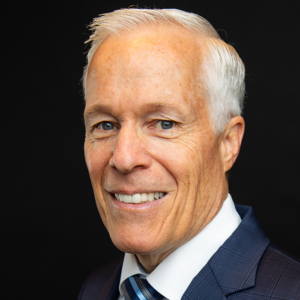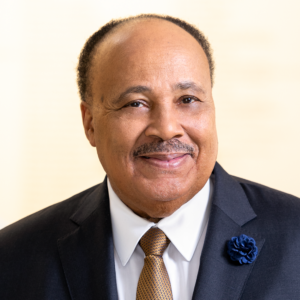Land Management: Conservation Easements

Land Management: Conservation Easements
Real property–land and the home or other structures on it–often has special significance to the family that owns it, to the surrounding community or to the ecology of the area. It may have played a role in an historical event; provide habitat for wildlife; command a magnificent view; or offer access to recreational or educational venues. It is only natural that owners might want to preserve the unique character of their property. Yet, real estate passing to one’s heirs is valued at its “best and highest use” for estate tax purposes. Even if it is open, undeveloped land, it will be taxed at the value that a residential or commercial developer would place upon it. This optimal market value of real property also may affect its assessment for local property taxes. For these reasons a growing number of conservation-minded landowners are choosing voluntarily and permanently to reduce the value of their land. The mechanism that they employ in this process is known as a conservation easement.
- If it has buildings of historical significance, or is part of a battlefield, an organization such as the National Trust for Historic Preservation may wish to enter into an agreement conserving its unique character in perpetuity.
- An organization such as Ducks Unlimited or the Nature Conservancy may accept an easement protecting a significant wildlife habitat containing special natural attributes.
- Limiting development of property commanding an impressive view may be of interest to local land trusts.
- Organizations also exist that are dedicated to the preservation of ranch and farm land.
- Less commonly, easements have been created in order to preserve land for public outdoor recreation or education.
Taking the form of a written agreement between the landowner and the conservation organizations, easements are quite adaptable to the individual circumstances of the case. Rights that the owner wishes to retain can be written into the agreement–even the right to subdivide, build an additional structure, retain timber, mineral or hunting rights, etc.
Tax issues
An easement is regarded as a charitable donation–the value of the donation being equal to the loss of value of the affected property. This can run from less than 20% to more than 90% of the property’s unencumbered value. Naturally, the more rights retained by the landowner, the lower will be the value of the easement.
The donation is deductible from income taxes up to a limit of 30% of income. Any excess can be carried forward for five additional years. Landowners granting easements with substantial value can even stagger their gifts in order to extend the tax deduction benefits.
Although it is not assured, an easement also may reduce the property value in the eyes of local tax assessors, resulting in savings on property tax.
Potentially the biggest advantage of conservation easements is in the estate tax. Easements are often cited as responsible for keeping in the family valued property that might otherwise have to be sold to pay estate tax. Recent changes to the tax code have given additional support to those contemplating the granting of an easement in order to keep a property in the family:
- The Taxpayer Relief Act of 1997 allowed an additional estate tax deduction of up to 40% (a maximum of $500,000 in 2002) of the otherwise taxable value of land subject to a qualifying conservation easement. The law applied to land close to metropolitan areas, national parks, Wilderness Areas and Urban National Forests. However, the tax act of 2001 extended the benefit to land anywhere in the United States. To qualify, the easement must protect outdoor recreation or education resources, wildlife habitat or open space “for the scenic enjoyment of the general public or in fulfillment of a . . . public conservation policy.” Easements solely for historic preservation do not qualify under this particular provision of the law.
- In 1998 Congress made the grant of postmortem easements possible. So long as no income tax deduction is taken for the easement, the estate can grant an easement, deduct its value, and, if applicable, claim the additional deduction authorized in the 1997 Act. To qualify, the easement must be in place by the estate tax return filing deadline including extensions.
Additional considerations
In practice the agreement for an easement must carefully spell out the rights that are being ceded and those that are being retained and must be binding on both parties For this purpose the assistance of an attorney specializing in real estate matters is essential. There must be something special or unusual about the land that you are protecting, although a great variety of properties, large and small, can be found to qualify. The agreement must be with a legitimate charity or government agency. In order to substantiate a tax deduction, the value assigned to the easement must be supported by a qualified appraisal. Often a cash donation accompanies the grant of an easement in order to help the grantee organization maintain the rights ceded to it.
An easement is generally not appropriate when a quick sale is contemplated. The tax benefits notwithstanding, most people who grant conservation easements have a genuine interest in preserving the environment. Although an easement is regarded as reducing the market value of the property on which it is granted, the reverse is sometimes the case. Certain buyers it seems are actually willing to pay more for conserved land.
As you can see, a conservation easement can be a key part of a family’s financial and estate planning. After all aren’t a family’s landholdings worth as much planning attention as a family’s business?
We hope you found this article about “Land Management: Conservation Easements” helpful. If you have questions or need expert tax or family office advice that’s refreshingly objective (we never sell investments), please contact us or visit our Family office page or our website at www.GROCO.com. Unfortunately, we no longer give advice to other tax professionals gratis.
To receive our free newsletter, contact us here.
Subscribe our YouTube Channel for more updates.

Alan Olsen, is the Host of the American Dreams Show and the Managing Partner of GROCO.com. GROCO is a premier family office and tax advisory firm located in the San Francisco Bay area serving clients all over the world.
Alan L. Olsen, CPA, Wikipedia Bio

GROCO.com is a proud sponsor of The American Dreams Show.

The American Dreams show was the brainchild of Alan Olsen, CPA, MBA. It was originally created to fill a specific need; often inexperienced entrepreneurs lacked basic information about raising capital and how to successfully start a business.
Alan sincerely wanted to respond to the many requests from aspiring entrepreneurs asking for the information and introductions they needed. But he had to find a way to help in which his venture capital clients and friends would not mind.
The American Dreams show became the solution, first as a radio show and now with YouTube videos as well. Always respectful of interview guest’s time, he’s able to give access to individuals information and inspiration previously inaccessible to the first-time entrepreneurs who need it most.
They can listen to venture capitalists and successful business people explain first-hand, how they got to where they are, how to start a company, how to overcome challenges, how they see the future evolving, opportunities, work-life balance and so much more..
American Dreams discusses many topics from some of the world’s most successful individuals about their secrets to life’s success. Topics from guest have included:
Creating purpose in life / Building a foundation for their life / Solving problems / Finding fulfillment through philanthropy and service / Becoming self-reliant / Enhancing effective leadership / Balancing family and work…

MyPaths.com (Also sponsored by GROCO) provides free access to content and world-class entrepreneurs, influencers and thought leaders’ personal success stories. To help you find your path in life to true, sustainable success & happiness. It’s mission statement:
In an increasingly complex and difficult world, we hope to help you find your personal path in life and build a strong foundation by learning how others found success and happiness. True and sustainable success and happiness are different for each one of us but possible, often despite significant challenges.
Our mission at MyPaths.com is to provide resources and firsthand accounts of how others found their paths in life, so you can do the same.
Faith, Freight & “Slaying the Tomb”
How the Moscrips Drove From Freight Tech to Faith-Fueled Media When Scott Moscrip launched Truckstop.com from a spare bedroom in 1995, he didn’t just build a freight-matching marketplace—he rewired a blue-collar industry for the Internet age. Thirty years, five kids, and one mayoral term later, the Idaho technologist and his wife, Carmen, are chasing an…
From the Streets to Self-Reliance
How Joseph Grenny’s Other Side Village Is Rewriting the Homelessness Playbook A 2 a.m. Alarm and a Box of World-Class Doughnuts At two o’clock each morning in downtown Salt Lake City, former rough-sleepers slip into spotless aprons, fire up industrial mixers, and begin turning out pillowy brioche rings glazed with passion-fruit icing and drizzled…
Building a Legacy: A Fireside Chat with Martin Luther King III
In a thought-provoking fireside chat at our Legacy Builder’s Conference, Martin Luther King III shared profound insights on the concept of legacy, leadership, and the moral imperatives facing society today. Speaking with Alan Olsen, he reflected on his father’s enduring impact and his own efforts to carry forward that mission in today’s world. Defining His…
Turning Ordinary Lives into Living Legacies
“There was a measurable connection between how well they knew their family stories and how successful they were.” — Kasia Flanagan, founder of Everyday Legacies When historian‑turned‑biographer Kasia Flanagan examined the lives of mixed‑race German‑Samoan descendants for her PhD, she expected to chart migration patterns and cultural shifts. What she didn’t expect was the data point that changed her career:…




